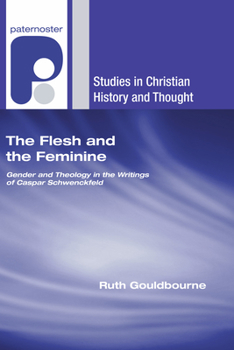The Flesh and the Feminine
Select Format
Select Condition 
Book Overview
During the sixteenth-century reformations, Caspar Schwenckfeld was one of the mavericks and creative thinkers who made up the amorphous grouping of radicals. At the time, and since, much has been made of the number of women who were attracted to his theology. Various reasons for this have been suggested, ranging from the attractions of a well spoken nobleman through to the pull of a more domestic religion. This study argues that the attraction lay in the theology that Schwenckfeld explored and offered, and the ways in which it destabilized the accepted social and biological definitions of gender identity.
Format:Paperback
Language:English
ISBN:1556351283
ISBN13:9781556351280
Release Date:June 2007
Publisher:Wipf & Stock Publishers
Length:278 Pages
Weight:0.94 lbs.
Dimensions:0.6" x 7.1" x 8.9"
Customer Reviews
0 rating





